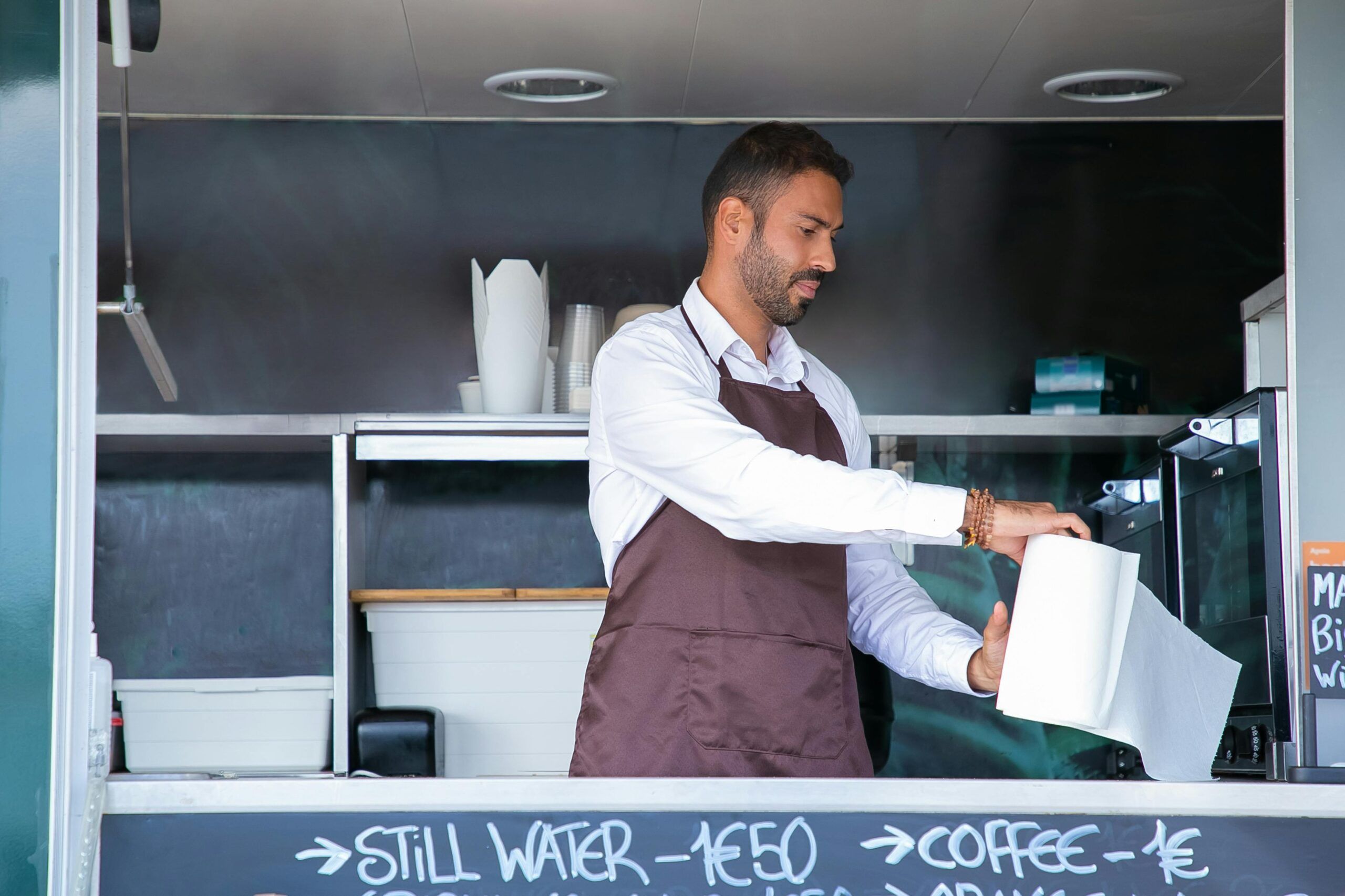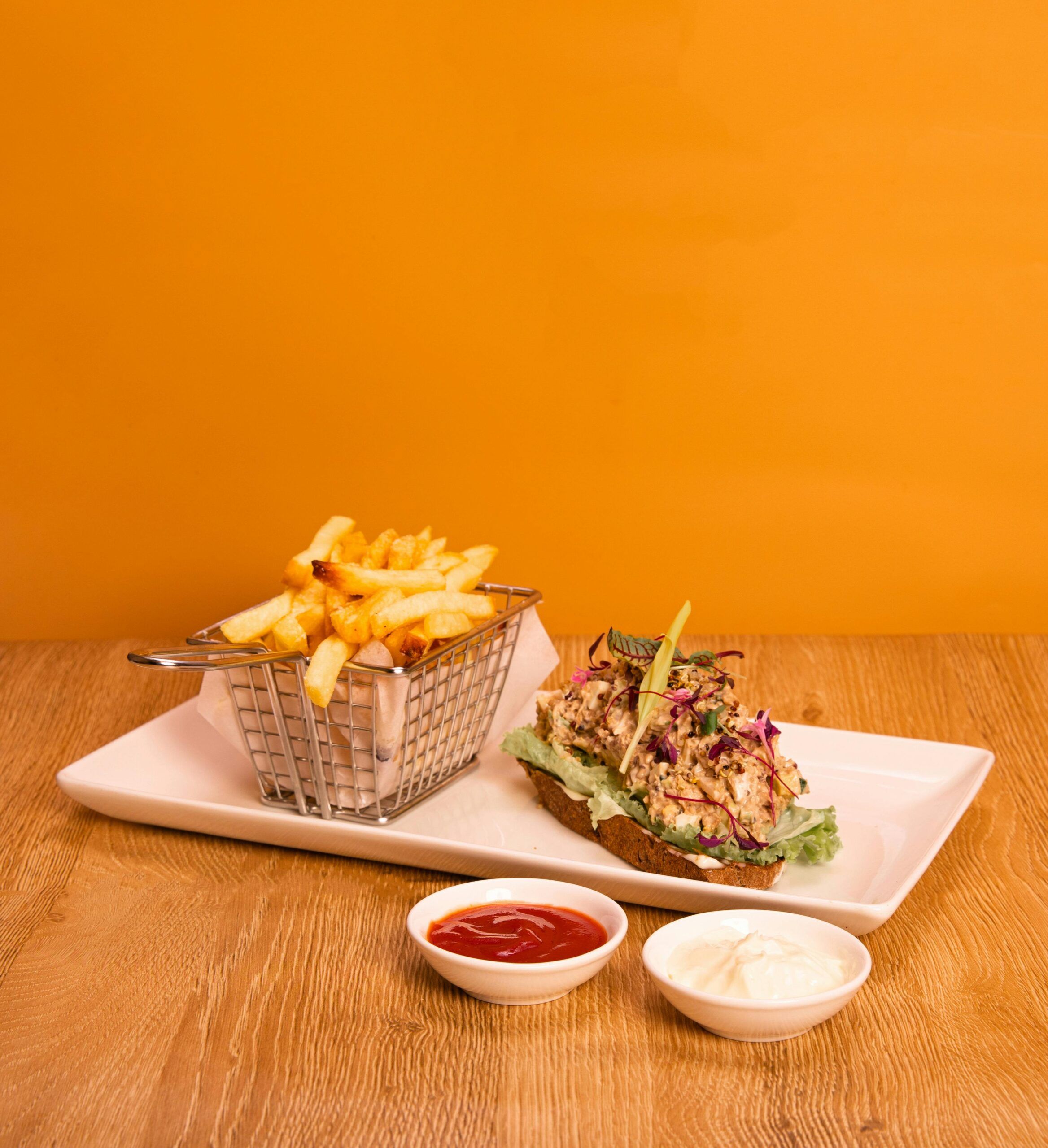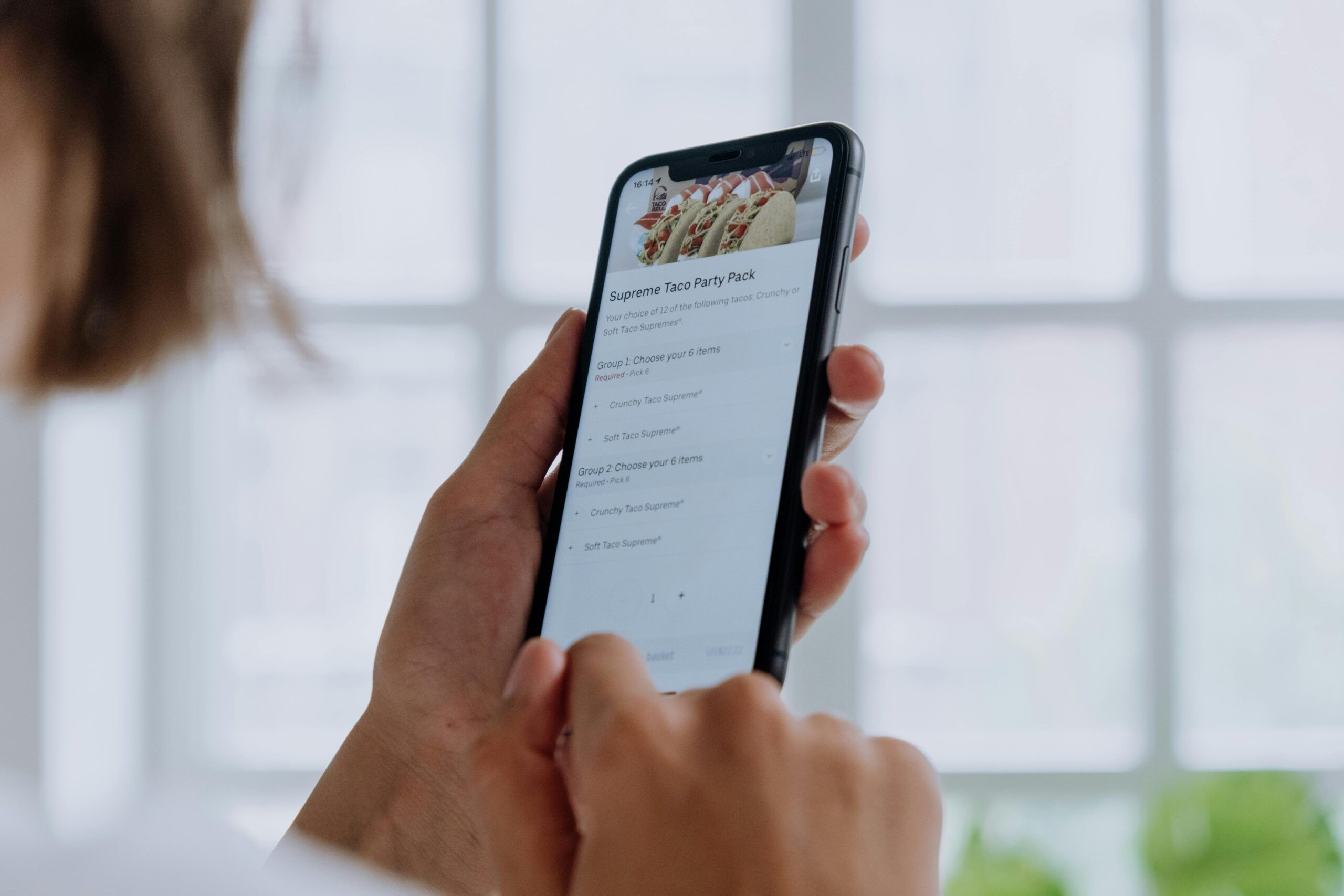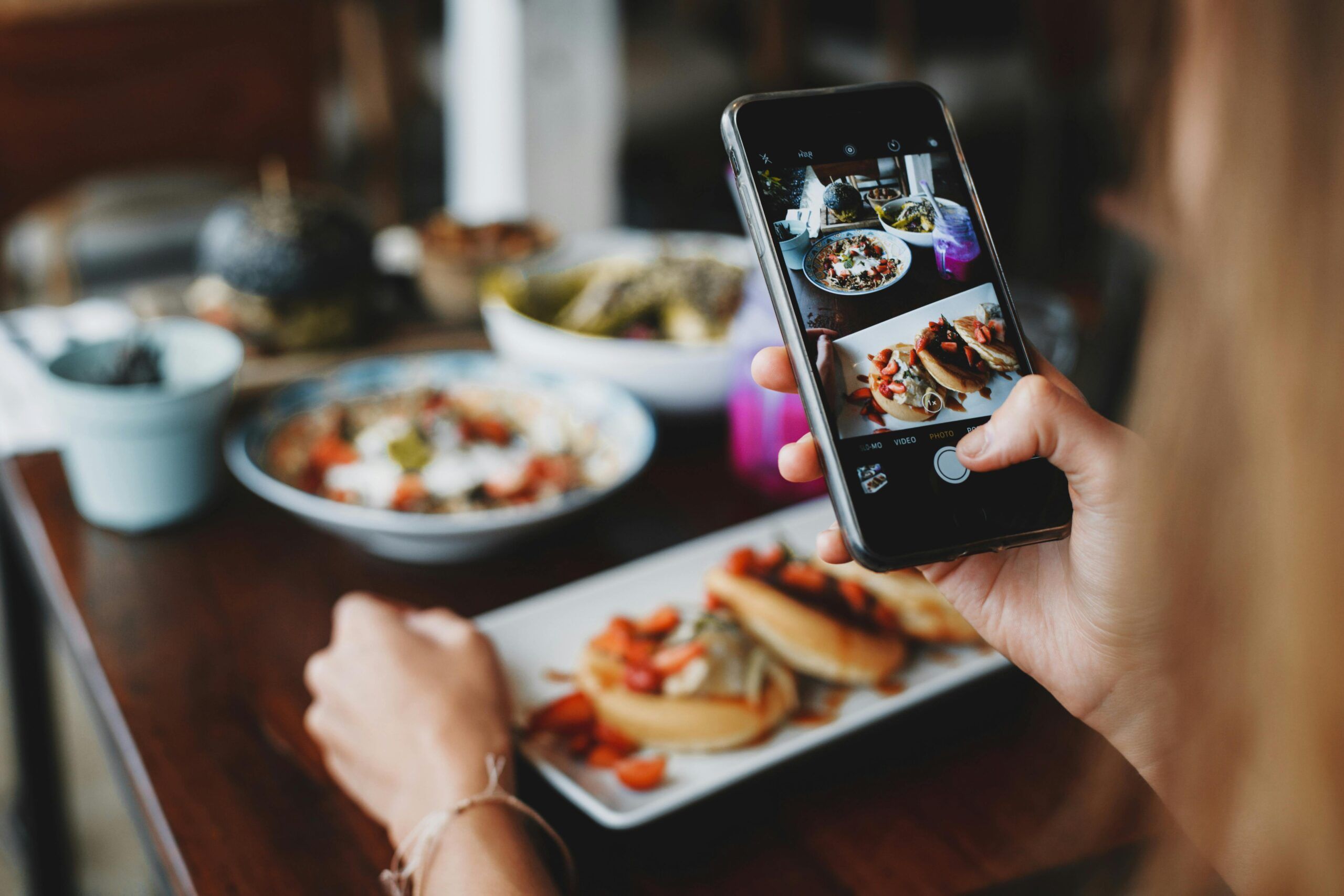- The State Of The Food Truck Industry In 2024
- Strategy #1: Stick To A Predictable Delivery Schedule
- Strategy #2: Encourage Direct Orders To Keep More Of Your Revenue
- Strategy #3: Keep Your Menus Synced Across All Platforms
- Strategy #4: Use Delivery App Data To Make Smarter Business Decisions
- Real-World Example: Pizza On A Bus
- Make Delivery Apps Work For Your Food Truck
- FAQ
Running a food truck means staying on top of a lot—shifting locations, updating menus, and meeting customer expectations quickly. Delivery apps can bring in more orders and keep you visible, but they only work well when used with a clear plan.
Just signing up isn’t enough. To get the most out of delivery platforms, you need strategies that fit your schedule, menu, and style of service.
In this article, we’ll walk through four practical delivery app strategies that help food trucks stay organized, reach more customers, and increase their daily order count.
Key Takeaways
- Food trucks are growing fast, with over 58,000 operating in the U.S. today.
- Delivery apps can bring in steady business if used with a smart strategy.
- Set a predictable schedule to improve visibility and build repeat orders.
- Offer direct online ordering to reduce fees and keep more revenue.
- Keep your menu updated across all platforms to avoid order issues.
- Use delivery data to plan your hours, menu, and promotions.
- Tools like Orders.co help manage orders, menus, and data from one place.
- Pizza on a Bus shows how direct orders and clear marketing can pay off.
The State Of The Food Truck Industry In 2024
Source: Fliprogram
The food truck industry continues to show strong potential in the U.S., both as a business opportunity and as a growing part of the food service landscape. Here’s what recent data reveals:
- Industry Growth: The market has grown at a 10.9% compound annual growth rate (CAGR) over the past five years. While the sector saw a slight 0.5% dip in 2023, this likely reflects consolidation and more targeted operations.
- Business Volume: There are now more than 58,000 active food truck businesses nationwide, a 15.9% increase since 2018. This reflects growing consumer demand and increased interest from food entrepreneurs.
- Revenue and Profitability: The average annual revenue for a food truck is $346,000, with a 6.2% profit margin—much higher than the typical 1%–3% margin in traditional restaurants. Lower startup and labor costs make food trucks an efficient model for profitability.
- Owner Income: Food truck operators typically earn between $24,000 and $153,000 annually, representing about half of the business’s total profits. With lean teams, just over one employee per truck allows for a high personal return.
- Workforce Appeal: Wages in the food truck sector have increased by 14.8% from 2019 to 2024, making them a competitive and attractive employment option for cooks and kitchen staff.
Whether you’re already running a truck or planning to start one, these numbers show an evolving sector but still full of opportunity, especially when backed by innovative tools and strategies.
Strategy #1: Stick To A Predictable Delivery Schedule
Being mobile is a big advantage, but when it comes to delivery apps, consistency wins.
Delivery platforms prioritize businesses that are regularly available. If your hours and locations frequently change, your visibility in the app may decrease, and customers may not know when or where to order from you.
Many food trucks try to stay flexible by moving around too often. But if you’re building a delivery-friendly operation, it’s better to be reliably available in a few key areas than spread too thin.
Strategy #2: Encourage Direct Orders To Keep More Of Your Revenue
The Challenge:
Third-party delivery apps are a great way to reach new customers and stay visible. But as order volume grows, the per-order fees can impact your margins, especially for smaller operations like food trucks. That’s why it’s smart to offer customers an alternative way to order, giving you more control over your costs.
The Solution:
Direct online ordering doesn’t replace apps—it complements them. With a simple, mobile-optimized direct ordering website, you can accept orders without extra fees, allowing you to retain more of your earnings. Even a handful of direct orders per day can make a noticeable difference.
Make It Easy for Customers:
- Use QR codes on your truck, menus, and receipts.
- Add your order link to your social media and Google Business profile.
- Incentivize with perks like:
- $2 off first-time orders
- Exclusive menu items
- Loyalty rewards for repeat customers
- $2 off first-time orders
To make this even easier, Orders.co’s Restaurant Order Management System brings all your orders—direct and third-party—into a single device. You don’t have to choose one or the other. Manage everything in one place, reduce errors, and serve your customers faster.
Want to see how it works? Schedule a free demo and take control of your food truck delivery operations—without adding more complexity.
Strategy #3: Keep Your Menus Synced Across All Platforms
When you’re running a moving food truck, accurate menus across your delivery platforms are essential. A slight mismatch, such as an item showing as available when it’s actually sold out, can lead to canceled orders, customer complaints, and lost revenue.
Many food truck operators still manually update each delivery app, which can be overwhelming. The more innovative approach is to use a single menu management system that allows you to edit once and publish everywhere—across your delivery apps, website, and QR code menus.
This ensures your listings remain consistent, reduces errors, and saves time during service.
You’ll also want to simplify your delivery offerings. Focus on:
- Top-selling items
- Meals that hold up well during transport
- Options you can prepare quickly
This kind of setup improves your order speed and helps maintain a reliable truck food delivery experience—something that customers notice and appreciate.
Also, read:
- Which Tech Tools Can Help Manage Your Restaurant’s Delivery Orders More Effectively?
- 5 Effective Ways To Boost Restaurant Delivery Efficiency Across All Platforms
- AI For Restaurants: Top 5 Restaurants Using AI And Machine Learning For Growth
- The Future Of Dining: Why Customer Loyalty Programs Are Essential For Restaurants?
- How To Successfully Negotiate Lower Commissions With Food Delivery Apps?
Strategy #4: Use Delivery App Data To Make Smarter Business Decisions
Delivery apps don’t just bring in orders—they also give you valuable data that can help you run your food truck more effectively. When reviewed regularly, this information can help you plan more effectively, reduce waste, and increase your daily revenue.
Look at your delivery data to identify the following:
- Top-selling menu items
- Most profitable order times
- Areas with the highest order volume
- Which promotions brought in the most new customers
This kind of insight helps you make decisions with confidence. You’ll know which items to stock more of, when to schedule extra staff, and how to plan your locations based on actual demand.
If you’re using more than one delivery app, try to centralize your reporting. That way, you can compare performance across all platforms without jumping between dashboards.
Understanding your numbers isn’t about guesswork—it’s about having the right tools to make your food truck delivery strategy more focused and profitable.
Real-World Example: Pizza On A Bus
Andy Krkyan, owner of Pizza on a Bus in Los Angeles, built his food truck inside a converted school bus—complete with a wood-fired oven. While the setup is unique, his challenges are familiar: strict permitting, high build-out costs, and the need to maximize every order.
To keep more of his revenue, Andy prioritizes direct ordering through his website and regularly promotes it with QR codes and social media offers.
He even offered $2–$5 discounts exclusively to local customers who followed him online, proving that direct marketing and ordering can work hand-in-hand, especially when location and consistency are key factors.
Andy utilizes technology to streamline daily operations and prefers a setup that allows him to manage everything from a single device—whether it’s for catering, events, or school contracts.
Make Delivery Apps Work For Your Food Truck
Delivery apps can be a strong revenue driver for food trucks—if you use them with intention. Setting a consistent schedule, offering a direct ordering option, keeping your menus synced, and paying attention to performance data can help you maximize the value of every order.
You don’t need a big team or complicated setup to make these strategies work. Just a few smart adjustments can lead to better margins, smoother operations, and more loyal customers.
To make these strategies easier to manage, Orders.co offers AI-powered tools built specifically for independent food businesses like yours. With real-time syncing, order tracking, and automation built in, you can stay focused on delivering service, not managing systems.
Here’s how Orders.co supports food truck delivery operations:
Restaurant Online Orders Management
Handle all orders—from third-party apps and your website—on a single device. No more juggling multiple tablets. Our restaurant’s online orders management tool makes order taking faster and less error-prone, even during your busiest hours.
Local Business Optimization
Enhance your online presence across Google My Business, Yelp, and over 80 directories with a local business optimization tool. Accurate listings and customer reviews help nearby customers find and trust your food truck. This is crucial for mobile operators who frequently change locations.
Menu Management
Make changes to your menu once, and push updates to all connected platforms. With our Master Menu, add new items, adjust pricing, or mark an item as sold out in real-time. It saves time and avoids customer confusion.
Custom Ordering Website
Launch a commission-free custom ordering website in under 30 seconds with Orders.co’s AI Website Builder. Customers can place direct orders, helping you keep more of your revenue. It’s mobile-friendly and fully branded to your business.
Guest Feedback Monitoring
Automatically collect and organize reviews from delivery apps and your website with a guest feedback monitoring tool. Spot trends, respond to issues quickly, and highlight positive feedback. It’s a straightforward way to maintain a positive reputation.
Integrations
Orders.co integrates with major delivery platforms and over 30 POS systems. This keeps your data, menu, and orders in sync across all channels. No need for manual updates or duplicate systems.
Reporting
Access daily reports with sales, peak hours, top items, and platform performance—all in one place. Custom filters let you drill down into what matters most. Ideal for making better decisions without extra guesswork.
Dispute Management
Identify incorrect delivery charges and submit disputes automatically with AI assistance. Get alerts, track outcomes, and recover revenue faster. Built-in guidance improves your success rate over time.
Ready to simplify how your food truck handles delivery apps and online orders?
Schedule a free demo to see how Orders.co can help.
FAQ
Do I need to have a fixed address to be listed on delivery apps as a food truck?
Most delivery apps require a set location to appear in local searches. However, some platforms allow flexible location settings if you operate on a predictable schedule. Using a tool that manages updates across platforms can help your food truck delivery visibility stay consistent, even when you’re mobile.
How can I compete with larger restaurants offering delivery in the same area?
Focus on speed, quality, and convenience. A well-run delivery food truck that delivers quickly and offers customer-friendly ordering options (like QR codes or direct ordering links) can easily stand out in local searches. You can also use promotions and loyalty programs to bring customers back.
What’s the best way to promote my food truck delivery service on social media?
Post your weekly schedule, showcase your menu items, and highlight special offers or events. Use Instagram Stories or location tags to show where you’re set up each day. Most importantly, include direct links to your food truck delivery service ordering page so customers can place orders instantly.
Can I use more than one delivery platform at once?
Yes. Many food truck operators use multiple apps to increase reach. The key is to manage them efficiently. Using a system that consolidates all platforms into one interface helps you avoid missed orders and duplicate work—especially important for fast-paced food truck delivery operations.
Is it worth offering delivery if I mainly do catering or events?
Yes, if it’s done in a manageable way. A reliable food truck delivery setup can help fill gaps between events and attract customers in new areas. Even if delivery isn’t your main focus, having it available adds an extra stream of revenue when you’re parked and ready to serve.



